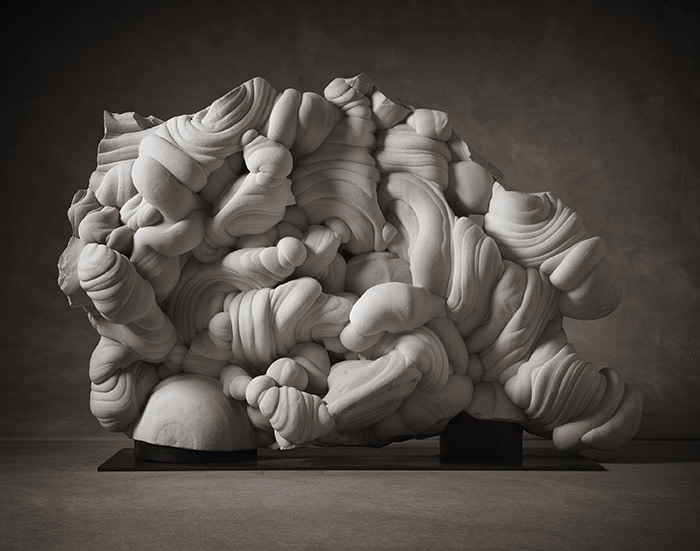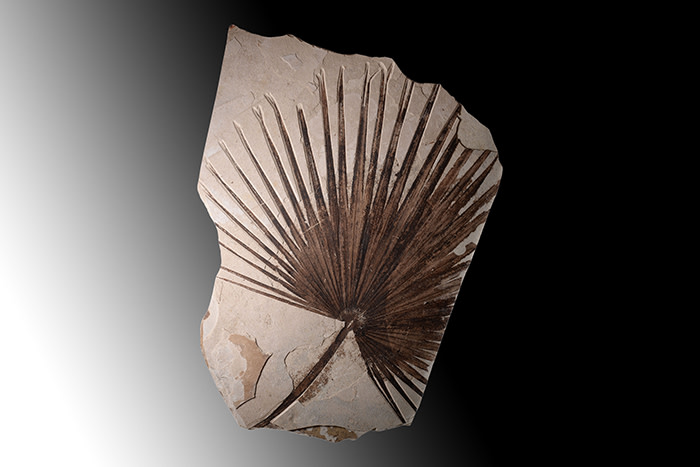Natural history for art collectors

Simply sign up to the Life & Arts myFT Digest -- delivered directly to your inbox.
Around 220AD a large black conical meteorite was transported to Rome from Syria. The young emperor Marcus Aurelius Antoninus Augustus ordered it installed in a grand temple on the Palatine as a symbol of the sun god, Elagabal, replacing Jupiter in the pantheon. Here, according to contemporary Roman historian Herodian, “This stone is worshipped as though it were sent from heaven.”
Meteorites have inspired wonder since the ancient world, and natural history objects were displayed alongside fine art in cabinets of curiosity throughout Renaissance and Enlightenment Europe. Today, these natural phenomena are again finding new admirers among art collectors. In May, Eskenazi, the Mayfair gallery specialising in Chinese art, broke from tradition to mount a show of gogottes (priced $15,000-$100,000). These highly sculptural swirls of sandstone, looped, squeezed and folded, which look as though extruded by machine, were formed 30m years ago in ancient sand dunes near Fontainebleau in France. How they were made is still being puzzled over by geologists and, as David Attenborough put it in his catalogue essay, “It will need an art historian and perhaps a psychologist to explain why the wonderful mysterious shapes so bewitch us.”
One particularly unusual gogotte, with a double spike, was a highlight of Christie’s first dedicated Natural History sale, entitled “Sculpted by Nature: Fossils, Minerals and Meteorites”, held at its King Street headquarters in April. Estimated at £3,000-£5,000, it achieved £12,500. The sale included fossils, skeletons, fragments of meteorite and geological specimens, with the top lot, a beautiful double fossil Sea Lily plaque, fetching £22,500.
While these prices are still modest in comparison with the sums paid for antiquities and fine art, James Hyslop, Christie’s specialist, reports that, “over the past five years, Natural History has just boomed.” A breakthrough moment for him was the sale in October 2016, where a particularly fine collection of five gogottes saw prices rise to £43,750, on one lot estimated at £6,000-£8,000.
Rather than relegating natural history objects to specialist sales and fairs, dealers and auction houses are repositioning them alongside fine art. At Masterpiece this year, Finch & Co, the eclectic dealership specialising in curiosities, is displaying antiquities and ethnographic objects alongside natural history, including three 19th-century leopard tortoise shells from Kenya, among other animal objects. Only antique pieces, from non-endangered species, of course: everything is approved by the UK‘s Animal and Plant Health Authority — although export to some countries can pose difficulties.
They are joined at Masterpiece this year by ArtAncient, a young dealership specialising in antiquities but with an interest in spectacular natural objects. “As we have started to take these objects to art fairs, people have responded to them as to other forms of art,” explains Costas Paraskevaides. “The question of the artist’s original intention is meaningless anyway, when it comes to fragments of Attic sculpture or a green-patinated, rust-encrusted cuirass.”

ArtAncient has recently bought a number of objects from a major US collection, some of which it will show at Masterpiece, including a dramatic large fossilised palm frond (£90,000) and a Sikhote-Alin meteorite, which in its rapid tumble through the atmosphere developed sculptural, scooped “thumb” prints on its iron surface (£90,000). As Paraskevaides explains, “This is an immature market. We are trying to exercise high standards regarding condition and beauty. It is about making an aesthetic judgment and separating the best from the rest.”
Follow @FTLifeArts on Twitter to find out about our latest stories first. Subscribe to FT Life on YouTube for the latest FT Weekend videos
Comments